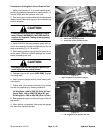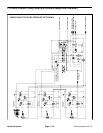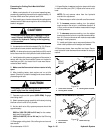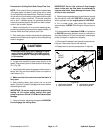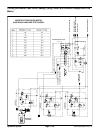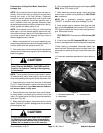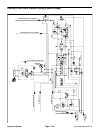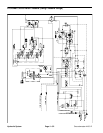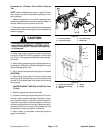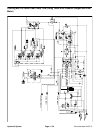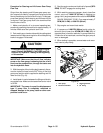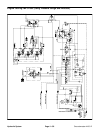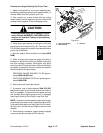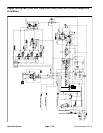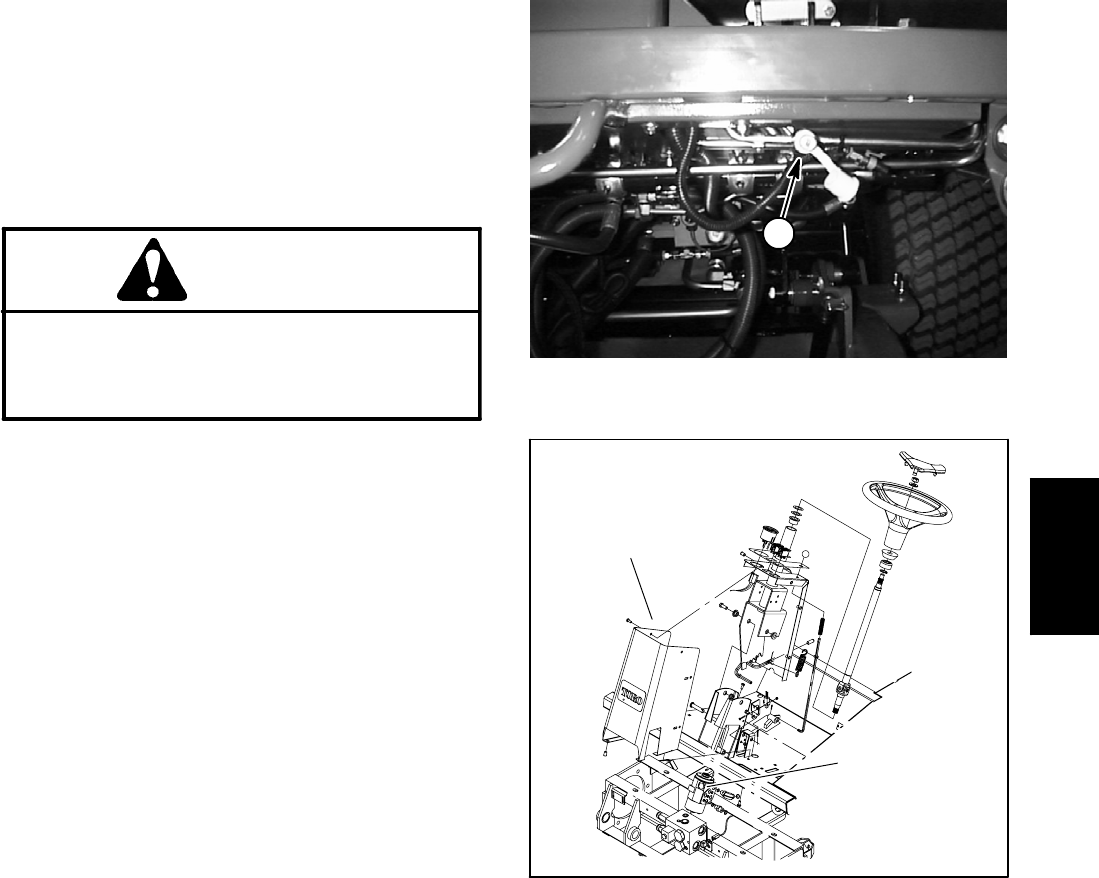
Groundsmaster 4100--D Hydraulic SystemPage 4 -- 51
Procedure for Steering Circuit Relief Pressure Test
1. Make sure hydraulic oil is at normal operating tem-
perature by operating the machine for approximately 10
minutes. Make sure the hydraulic tank is full.
2. Parkmachineon a level surface with thecuttingdeck
lowered and off. Make sure engine is off and the parking
brake is engaged.
CAUTION
Prevent personal injury and/or damage to equip-
ment. Read all WARNINGS, CAUTIONS and Pre-
cautions for Hydraulic Testing at the beginning
of this section.
3. Connect a 5000 PSI (350 bar) gauge onto steering
circuit pressure test port (Fig. 39).
4. After installing pressure gauge, start engine and run
at idle speed. Check for hydraulic leakage and correct
before proceeding with test.
5. Operatetheengine at full engine speed(2870RPM).
IMPORTANT: Hold steering wheel at full lock only
long enough to get a system pressure reading.
Holding the steering wheel against the stop for an
extended period will damage the steering motor.
6. Turn steering all the way in one direction and mo-
mentarily hold the steering wheel against resistance.
GAUGE READING TO BE 1300 to 1400 PSI (90 to
96 bar).
7. Stop the engine and record test results.
8. If pressure is incorrect, inspect steering relief v alve
in controlvalve(Fig.40). If steering reliefvalveisoperat-
ing properly and if lift/lower problems also exist, gear
pump should be suspected of wear and inefficiency. If
steering wheel continues to turn at end of cylinder travel
(with lower than normal effort), steering cylinder or
steering valve should be suspected of wear or damage.
9. When testing is completed, disconnect pressure
gauge from test port.
1. Steering circuit pressure test port
Figure 39
1
1. Steering tower 2. Steering relief valve
Figure 40
2
1
Hydraulic
System



